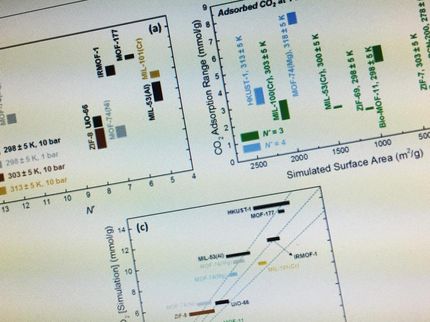Testing predictions in electrochemical nanosystems
From theoretical insights to the lab bench
Physicists at the Technische Universitaet Muenchen (TUM) are gearing up for experimental tests of findings they arrived at through theoretical considerations: that electrochemical reactions take place more rapidly on isolated, nanometer-scale electrodes than on their familiar macroscopic counterparts, and that this surprising behavior is caused by thermal noise. Prof. Katharina Krischer and Dr. Vladimir Garcia-Morales published their results earlier this year in the Proceedings of the National Academy of Sciences (PNAS). The project is supported by the TUM Institute for Advanced Study, which emphasizes scientifically "risky" research that may have potential for creating new fields of technology.
Familiar processes take unfamiliar turns when they're observed on the nanoscale, where models that accurately describe macroscopic phenomena may not be reliable, or even applicable. Electrochemical reactions, for example, which normally appear to proceed smoothly, seem to halt and stumble in the nanoworld. When the electrodes involved are less than ten nanometers wide, chance plays a bigger role: Random movement of molecules makes the exact timing of reactions unpredictable.
Now, however, just such a process can be described by a theoretical model developed by the TUM physicists. They demonstrated their method in a study of nanoscale reactions, published in PNAS, which presented a new electrochemical "master equation" underlying the model. Their results show that thermal noise -- that is, the randomness of molecular movement and individual electron-transfer reactions -- actually plays a constructive role in a nanoscale electrochemical system, enhancing reaction rates.
"The effect predicted is robust," says Dr. Vladimir Garcia-Morales, recently named a Carl von Linde Junior Fellow of the TUM Institute for Advanced Study, "and it should show up in many experimental situations." To see for themselves, the researchers have turned their attention from the chalkboard and the computer to the lab bench. Their experiments present several technical challenges. One is not only to fabricate disk-shaped electrodes with a radius of just three to ten nanometers, but also to determine the electrode area accurately. Another tough requirement is setting up the electronics to minimize noise from external sources, to make sure the influence of internal, molecular noise can be observed.
"An important aspect," Dr. Garcia-Morales says, "is that the reported effect can change our view on the collective properties of many electrodes. Common intuition suggests that if one makes the electrode area ten times as large, the current would be ten times as high. But, as we show with our theory, the proportionality does not hold any more when the electrode dimension becomes as small as a few nanometers."
Experimental validation could also help to transpose the TUM researchers' theory to a variety of situations. They say their method accounts for effects that macroscopic models can't explain and could prove useful in addressing a variety of research questions. "The applicability of the electrochemical master equation is in fact beyond the specific problem addressed in the publication," Prof. Katharina Krischer stresses. "It establishes a general framework for stochastic processes involving electron-transfer reactions. For example, we now use it to predict the quality of electrochemical clocks at the nanoscale."
Original publication: Vladimir Garcia-Morales and Katharina Krischer; "Fluctuation enhanced electrochemical reaction rates at the nanoscale"; PNAS 2010, 107, 4528-4532
Most read news
Other news from the department science

Get the chemical industry in your inbox
By submitting this form you agree that LUMITOS AG will send you the newsletter(s) selected above by email. Your data will not be passed on to third parties. Your data will be stored and processed in accordance with our data protection regulations. LUMITOS may contact you by email for the purpose of advertising or market and opinion surveys. You can revoke your consent at any time without giving reasons to LUMITOS AG, Ernst-Augustin-Str. 2, 12489 Berlin, Germany or by e-mail at revoke@lumitos.com with effect for the future. In addition, each email contains a link to unsubscribe from the corresponding newsletter.


























































